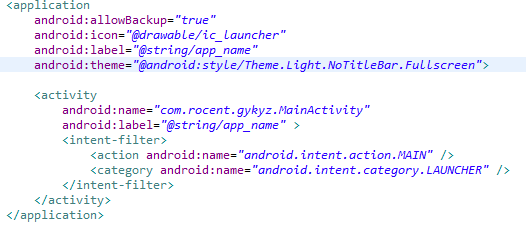編輯:Android開發實例
1、Android系統默認支持三種字體,分別為:“sans”, “serif”, “monospace
2、在Android中可以引入其他字體 。
代碼如下:
<?xml version="1.0" encoding="utf-8"?>
<TableLayout xmlns:Android="http://schemas.android.com/apk/res/android"
Android:layout_width="fill_parent"
Android:layout_height="fill_parent" >
<TableRow>
<TextView
Android:layout_marginRight="4px"
Android:text="sans:"
Android:textSize="20sp" >
</TextView>
<!-- 使用默認的sans字體 -->
<TextView
Android:id="@+id/sans"
Android:text="Hello,World"
Android:textSize="20sp"
Android:typeface="sans" >
</TextView>
</TableRow>
<TableRow>
<TextView
Android:layout_marginRight="4px"
Android:text="serif:"
Android:textSize="20sp" >
</TextView>
<!-- 使用默認的serifs字體 -->
<TextView
Android:id="@+id/serif"
Android:text="Hello,World"
Android:textSize="20sp"
Android:typeface="serif" >
</TextView>
</TableRow>
<TableRow>
<TextView
Android:layout_marginRight="4px"
Android:text="monospace:"
Android:textSize="20sp" >
</TextView>
<!-- 使用默認的monospace字體 -->
<TextView
Android:id="@+id/monospace"
Android:text="Hello,World"
Android:textSize="20sp"
Android:typeface="monospace" >
</TextView>
</TableRow>
<!-- 這裡沒有設定字體,我們將在Java代碼中設定 -->
<TableRow>
<TextView
Android:layout_marginRight="4px"
Android:text="custom:"
Android:textSize="20sp" >
</TextView>
<TextView
Android:id="@+id/custom"
Android:text="Hello,World"
Android:textSize="20sp" >
</TextView>
</TableRow>
</TableLayout>
代碼如下:
// 得到TextView控件對象
TextView textView = (TextView) findViewById(R.id.custom);
// 將字體文件保存在assets/fonts/目錄下,www.linuxidc.com創建Typeface對象
Typeface typeFace = Typeface.createFromAsset(getAssets(),"fonts/DroidSansThai.ttf");
// 應用字體
textView.setTypeface(typeFace);
如果想對整個界面的所有控件都應用自定義字體,可以:
代碼如下:
package arui.blog.csdn.net;
import android.app.Activity;
import android.graphics.Typeface;
import android.view.View;
import android.view.ViewGroup;
import android.widget.Button;
import android.widget.EditText;
import android.widget.TextView;
public class FontManager {
public static void changeFonts(ViewGroup root, Activity act) {
Typeface tf = Typeface.createFromAsset(act.getAssets(),
"fonts/xxx.ttf");
for (int i = 0; i < root.getChildCount(); i++) {
View v = root.getChildAt(i);
if (v instanceof TextView) {
((TextView) v).setTypeface(tf);
} else if (v instanceof Button) {
((Button) v).setTypeface(tf);
} else if (v instanceof EditText) {
((EditText) v).setTypeface(tf);
} else if (v instanceof ViewGroup) {
changeFonts((ViewGroup) v, act);
}
}
}
}
 android 設置全屏的兩種方法
android 設置全屏的兩種方法
現在android的每一個項目都會需要設置為全屏,現在介紹兩種設置為全屏的方式。 一、在配置文件中設置android:theme=”@android:style/
 Android加載Spinner
Android加載Spinner
可以顯示在的Android任務,通過加載進度條的進展。進度條有兩種形狀。加載欄和加載微調(spinner)。在本章中,我們將討論微調(spinner)。Spinner 用
 Android加載Spinner
Android加載Spinner
可以顯示在的Android任務,通過加載進度條的進展。進度條有兩種形狀。加載欄和加載微調(spinner)。在本章中,我們將討論微調(spinner)。Spinner 用
 Android MediaPlayer(多媒體播放)
Android MediaPlayer(多媒體播放)
Android提供了許多方法來控制播放的音頻/視頻文件和流。其中該方法是通過一類稱為MediaPlayer。Android是提供MediaPlayer類訪問內置的媒體播放